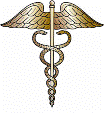
United States Public Health Resources
Date of this Version
1994
Citation
JOURNAL OF CLINICAL MICROBIOLOGY, Vol. 32, No. 1 Jan. 1994, p. 194-198
Abstract
Salmonella enteridis is now the most common serotype of the genus Salmonella reported in the United States. Bacteriophage typing has been helpful for subdividing S. enteritidis strains from different sources in the United States. Most S. enteritidis outbreaks reported were egg related, and the majority of them were caused by strains of phage type 8. To determine whether restriction fragment length polymorphism of the rRNA genes (ribotyping) and of the genomic DNAs from two lysogenic phages from S. enteritidis could be used to discriminate between S. enteritidis phage type 8 strains, we conducted Southern hybridization studies on 24 isolates from different outbreaks and six non-outbreak-associated strains using DNA probes for 16S and 23S rRNA genes and S. enteritidis typing phages 1 and 2 from the Ward typing system (L. R. Ward, J. D. H. de Sa, and B. Rowe, Epidemiol. Infect. 99:291-294, 1987). Of seven restriction endonucleases screened with the probe for rRNA genes, AccI provided the best discrimination between strains; six distinct patterns were observed. AccI ribosomal DNA patterns 1 to 6 were detected among 76.7, 3.3, 6.7, 3.3, 3.3, and 6.7% of isolates tested, respectively. Strains of AccI ribosomal DNA pattern 3 could be further subdivided into two additional patterns by using SmaI. Epidemiologically related strains had identical patterns. No discrimination between strains was achieved by probes for phages 1 and 2. No sequences homologous to the phage I probe were detected among phage type 8 strains, and all strains tested with six restriction enzymes had the same hybridization pattern with the phage 2 probe. These findings demonstrate that ribotyping with AccI and SmaI provides an additional means of discriminating between some phage type 8 strains; however, ribotyping and the phage 2 hybridization results from egg-related outbreak strains support previous findings that these strains are closely related.

